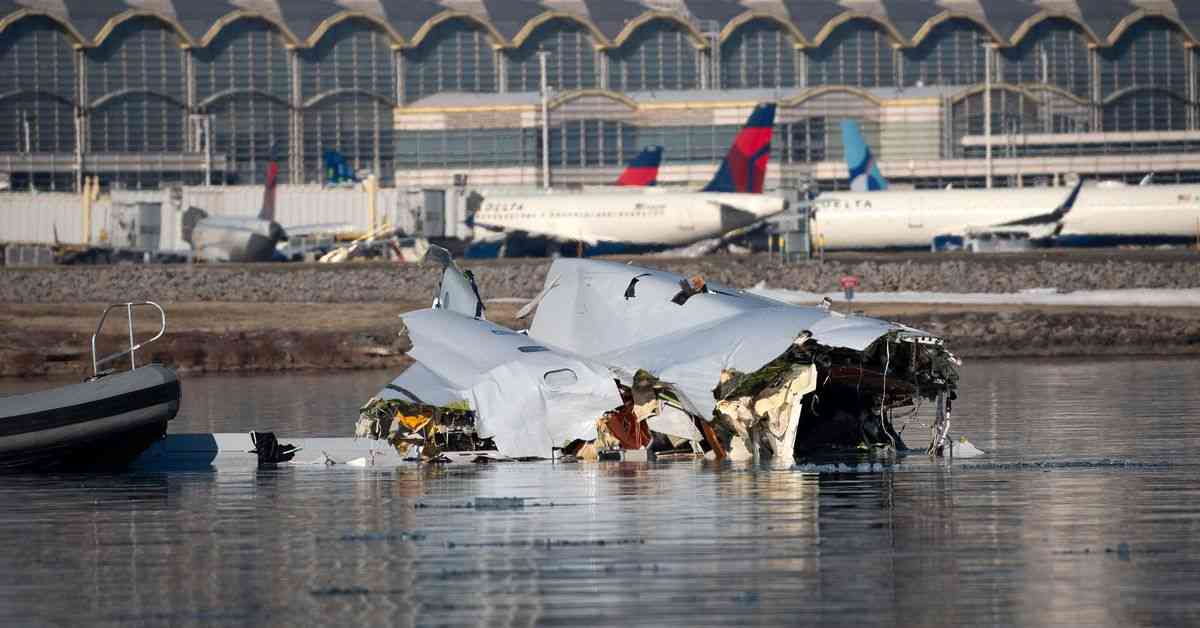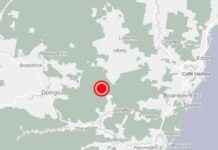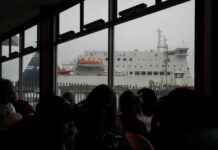A Tragic Night: The Untold Story of the Washington DC Plane Crash
Before American Eagle Flight 5342 soared into the skies from Wichita, Kansas, on its course to the nation’s capital, the scene was set with a bittersweet snapshot captured by figure skater Spencer Lane. The teenage skater paused to take a photo of the plane’s extended wing against the backdrop of a grayish-blue overcast sky, posted on his Instagram Stories with the caption “ICT->DCA,” symbolizing the journey from departure to destination. Little did he know, this would be his final update before boarding the ill-fated flight.
As Lane, his mother, and a group of budding skating stars, families, and coaches from the US and Russia prepared to depart after attending the US Figure Skating Championships and a development camp for young athletes, the air was filled with anticipation. A total of 60 passengers and four crew members embarked on the commercial jet at 5:39 pm, embarking on a two-hour, 35-minute journey to Reagan National Airport, nestled just south of the illuminated marble monuments of Washington DC.
However, what was meant to be a routine flight turned into the deadliest aviation disaster in the US in nearly 25 years. As the Bombardier CRJ700 jet approached Runway 33 around 8:48 pm, a tragic midair collision occurred with a US Army Black Hawk helicopter, which was on a training flight with a crew of three. Videos captured the heart-wrenching moment when a massive fireball erupted, followed by a trail of smoke and debris, as both aircraft plummeted into the cold waters of the Potomac River, claiming the lives of all onboard.
The victims of this tragedy represented a diverse cross-section of individuals who navigate the nation’s congested airways daily, including a biology professor, soldiers, airline pilots, flight attendants, union workers, an attorney, and a group of young figure skating talents and their mentors. The aftermath of the crash left families grappling with immense loss and grief, such as Timothy Lilley, a former Army helicopter pilot, who lost his son, Sam Lilley, the first officer on Flight 5342. The pain of losing his son was compounded by the realization that the crew on the Army helicopter were also casualties of the collision.
Hamaad Raza, one of the distraught family members waiting for news at the airport, received a text message from his wife, indicating that the flight was moments away from landing. This tragic twist of fate left many grappling with the suddenness and finality of the disaster that unfolded in the skies above the Potomac River.
The Fateful Night: Miscommunication and Tragedy Unfolded
As the ill-fated aircraft neared Reagan National Airport, the US Army Black Hawk flew at a low altitude along Route 4, a designated corridor for law enforcement, medevac, and government helicopters. However, reports later indicated that the military helicopter may have deviated from its approved flight path, flying at a higher altitude and off-course. The experienced crew on board had logged over 1500 hours of flight time, raising questions about the circumstances leading to the collision.
Meanwhile, the pilots of Flight 5342 were also seasoned professionals, with the captain boasting six years of service with PSA Airlines and the first officer nearly two years with the carrier. Despite their expertise, a crucial moment of miscommunication occurred when the air traffic controller directed the commercial jet to use a shorter runway, intersecting the main runway, leading to a last-minute decision that may have contributed to the collision.
As the two aircraft approached each other in the night sky, the air traffic controller attempted to maintain visual separation between the jet and the helicopter, but the tragic outcome was inevitable. The final moments before the collision were captured in chilling radio transmissions, with audible gasps and frantic attempts to divert other aircraft away from the unfolding disaster.
The Aftermath: A City in Mourning
Following the devastating crash, eyewitnesses like Jimmy Mazel and Roy Best recounted the harrowing sights and sounds of the tragedy as they witnessed debris falling from the sky. The impact of the collision reverberated throughout the city, with first responders mobilizing to search for survivors and victims in the frigid waters of the Potomac River.
As rescue teams worked tirelessly to retrieve bodies from the submerged wreckage, the somber reality of the crash set in, with makeshift morgues set up at Gravelly Point Park, once a popular spot for plane enthusiasts. The recovery efforts faced numerous challenges, including poor visibility in the water and treacherous conditions that hindered the search for remaining victims.
The days following the crash were marked by a cloud of grief that enveloped the city, as families mourned their loved ones and the community grappled with the loss of so many lives in a single tragic event. The investigation into the collision, led by the National Transportation Safety Board, aimed to uncover the causes and factors that led to the deadly outcome, shedding light on the series of events that culminated in the Washington DC plane crash.
As the city of Washington DC and the nation at large grieved the lives lost in the tragic accident, the memory of Flight 5342 would forever be etched in the collective consciousness, serving as a stark reminder of the fragility of life and the unforeseen risks that accompany air travel. The legacy of those who perished in the crash would endure in the hearts of their families, friends, and a nation united in sorrow at the loss of 67 souls in a single night of tragedy.

















